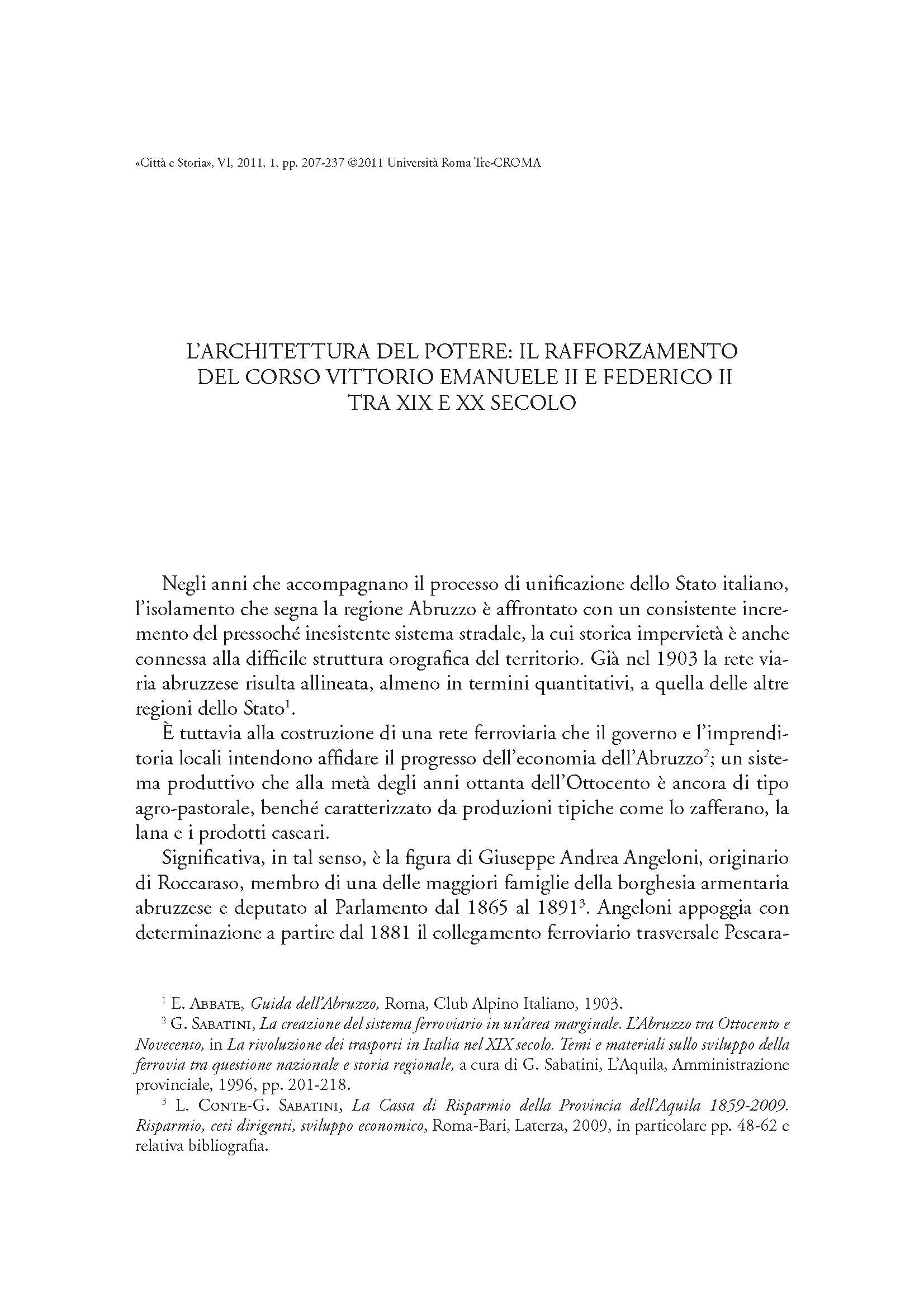L’architettura del potere: il rafforzamento del Corso Vittorio Emanuele II e Federico II tra XIX e XX secolo
6,00 €
The reconstruction of the events that shaped the building and urban development of the city of L’Aquila, from the Unification of Italy to after the Second World War, means to underline the close tie between political-economic and natural upheavals and the city’s configuration. A tie that finds its fullest expression in the architectural reinforcement and transformation of the city’s cardo, expression of the attempts at economic affirmation of the city. The story that accompanies this renewal, from the 1888 Exposition to the construction of buildings for the leading banks as well as those intended for tourism and recreation, betrays the fragility of a growth and transformation resulting from external operations and a substantial difficulty on the part of the entrepreneurship and local governments to activate a widespread process of regeneration and modernization. A fragility worthy of serious thought today now that the city must once again reinvent its future and recompose its complex identity.
The reconstruction of the events that shaped the building and urban development of the city of L’Aquila, from the Unification of Italy to after the Second World War, means to underline the close tie between political-economic and natural upheavals and the city’s configuration. A tie that finds its fullest expression in the architectural reinforcement and transformation of the city’s cardo, expression of the attempts at economic affirmation of the city. The story that accompanies this renewal, from the 1888 Exposition to the construction of buildings for the leading banks as well as those intended for tourism and recreation, betrays the fragility of a growth and transformation resulting from external operations and a substantial difficulty on the part of the entrepreneurship and local governments to activate a widespread process of regeneration and modernization. A fragility worthy of serious thought today now that the city must once again reinvent its future and recompose its complex identity.

